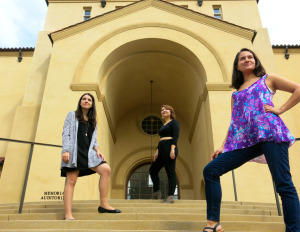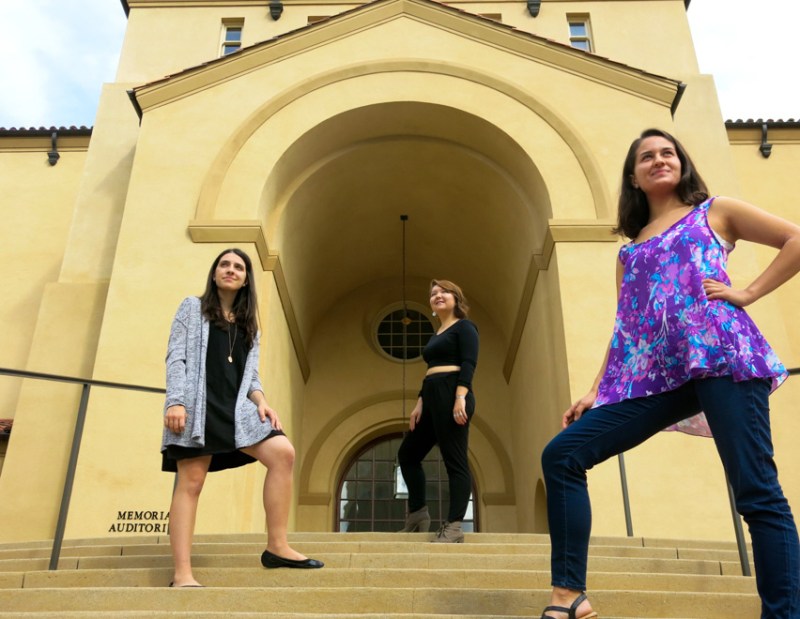In recent years, Stanford has seen an increase in the amount of student theater produced on campus. This quarter alone boasts nine separately produced shows. What is most notable about this quarter is not the abundance of Stanford theater, but its directors. Seven of these productions are being directed by women, an exciting statistic that deviates from that of the professional theater world.

On Broadway, female directors helm about 10 percent of shows. Even an institution as prolific and esteemed as the Roundabout Theatre has only employed 13 female directors in its 48-year history. Moreover, the female directors that are employed are oftentimes consigned to niche plays, ones that purportedly demand a feminine perspective, such as “Who’s Afraid of Virginia Woolf.” In this way, even the women that are employed as directors are often categorized and limited to a tiny segment of the standard theatrical canon. The Stanford theater community offers a stark contrast to these harsh realities of professional theater.
The current abundance of female directors on campus is far more representative of female involvement in theater; in fact, 65 to 70 percent of all theatergoers are women. Clearly, there is a disparity between female membership in Stanford theater and professional theater, but what causes it? It is partly due to the strength of the theater community, and partly due to the structure of Stanford itself.
The Stanford theater community is unrivaled in its inclusiveness, especially of women. This strong support network provides aspiring directors with strong, female role models and a community willing to accommodate their visions. Furthermore, the structure of a four-year institution, such as Stanford, lends itself to egalitarianism in theater. Within the professional industry, institutionalized patriarchal thinking still exists because there are individuals at the top of the theatrical hierarchy that have been in the industry for nearly half a century. In this way, professional theater has maintained many features of the old boys’ club that pervaded theater from the 16th-century to the 20th-century.
In contrast, Stanford is a bastion of progressive thought. Because there is a plurality of ideas coming and leaving the university every year, Stanford simply cannot retain the same ideological staleness that professional theater communities may. Ultimately, time may be the only cure for an industry that has been particularly sluggish in enacting reform on gender discrimination.
In the past decade, woman have received only a fraction of the employment opportunities on Broadway. In 2004, merely three shows on Broadway were directed by women. In 2005, the number was reduced to two. Beyond that, only seven women have ever received a Tony Award for directing. Only a few pioneers (such as Pam MacKinnon, Diane Paulus, and Anna D. Shapiro) have broken through Broadway’s glass ceiling. Unfortunately, this is a direct result of persisting attitudes on the competence of women as directors.
This issue of discrimination in theater is historically rooted, but that does not mean it is irrevocably entrenched. There are steps that can and should be taken in order to level the playing field for women and other disenfranchised parties. If Broadway wants to be serious about redressing gender discrimination, then perhaps it could take a leaf from Stanford’s book.
Women need to be included in the discussion. Far too often in the professional industry, male playwrights (and their male directors) sit behind closed doors and make authoritative decisions on the direction of professional theater. It is common for women to be excluded altogether from these discussions; it is typical of male playwrights to choose male directors, and female playwrights, female directors.
“Plays by female playwrights and female directors are constantly put in a category of ‘otherness’; they are still not the norm,” explains Saya Jenks ‘16, director of “Ching Chong Chinaman.” In order for professional theater to reach a more equitable balance of male to female directors, male playwrights and artistic directors need to entrust women with their shows.
Prior to the turn of the century, women were rarely trusted to run shows. Theater companies did not necessarily doubt their artistic capabilities; rather, they doubted their business acumen. The general, unspoken (and quite possibly, unconscious) sentiment is that women are less capable of dealing with the business aspects of a production than men. This mentality is far too familiar for artists like Sammi Cannold ‘16 (directing “Machinal” this fall), who is excited about the theatrical landscape at Stanford and what it bodes for the future: “I hope that this trust in female directors, not only as Directors, but also as businesswomen who are running companies, will follow us beyond Stanford.” As it does, we can work to increase the enfranchisement of female directors.
Part of the problem of female disenfranchisement in theater is due to the fact that we must refer to female directors as “female directors.” While it is true that being a woman will impact one’s interpretations, it is certainly not the only factor in determining interpretation. Female directors are just as pluralistic and nuanced as their male counterparts.
“The stereotype threat is a very real thing,” explains Leanna Keyes ‘14, director of “The Long Way Around.” “When you are of a particular minority or of a disempowered group, you are inevitably interpreted as being part of that group. I don’t have the luxury of being just a director; I am a female director.” There is a misconception amongst many theatergoers that there is an essential, monolithic quality to female directing. However, race, class, personal background and many other areas are equally influential in shaping a director’s identity as gender. Megan Gage ‘15, director of “Gaieties” at Stanford, elaborates: “First and foremost, I am a black, female director. But I am also loud, awkward and strange.” Each director brings unique qualities to her work. To categorize and pigeonhole all women as a certain type of director is just as limiting as having not employed them in the first place.
Until then, the strong community of female directors that exists at places like Stanford (and is penetrating Off-Broadway theaters) will continue to thrive. Women who seek to make a living in directing should be role models and mentors for each other; they are the trailblazers who will pave the way for a new generation of directors. Hopefully, that generation — our generation — is one that can acknowledge and work to overcome the prejudice in the history of theater while remaining focused on what is truly important: the art.
The following are the plays this quarter with female directors mentioned in this article:
The Long Way Around, directed by Leanna Keyes. Performed in the Women’s Community Center, Oct. 23-25.
Ching Chong Chinaman, directed by Saya Jenks. Performed in Roble Dorm Theater, Oct. 30-Nov 1.
Proof, directed by Noemi Berkowitz. Performed in Elliot Program Center, Nov. 6-8 and 13-15.
The Klaus Conundrum, directed by Patty Hamilton. Performed at Haus Mitt, Nov. 6-8.
Machinal, directed by Sammi Cannold. Performed in the Nitery, Nov. 13-15.
At the Fountain Cabaret, directed by Benina Stern. Performed in Roble Dorm Theater, Nov. 13-15.
Gaieties, directed by Megan Gage. Performed in Memorial Auditorium Nov. 19-21.
Contact Ian Anstee at ianstee5 “at” stanford.edu.
